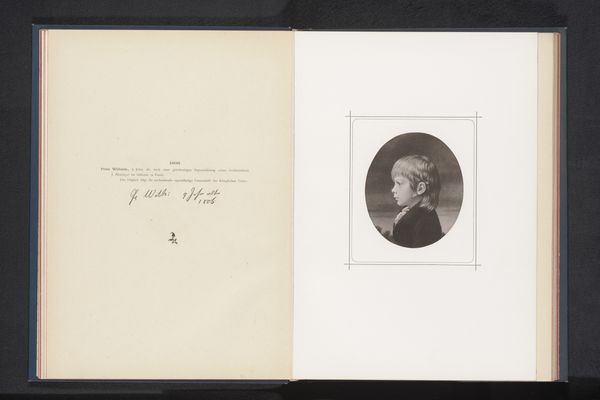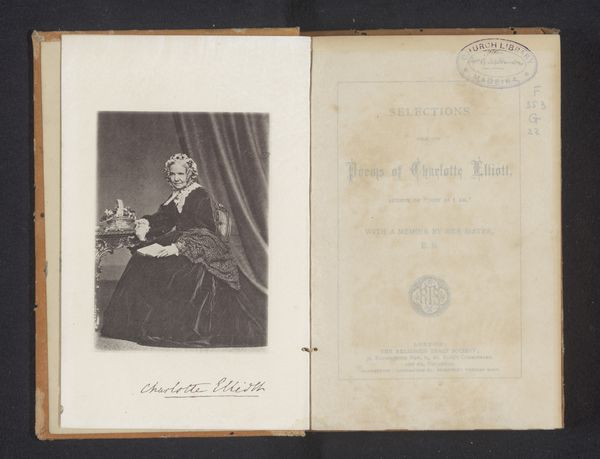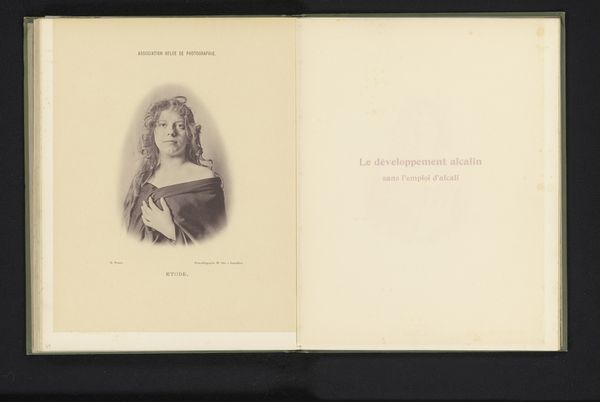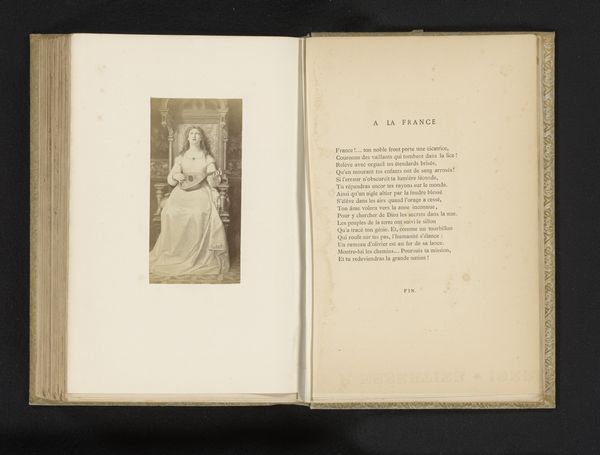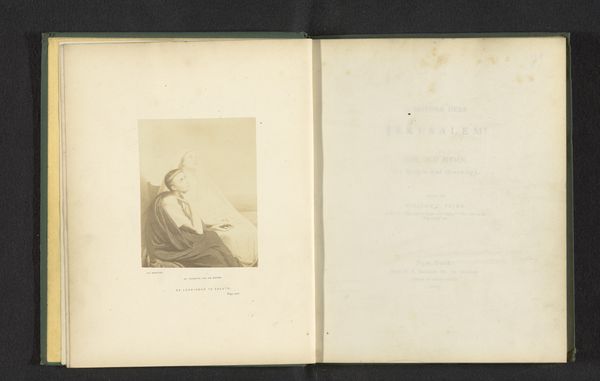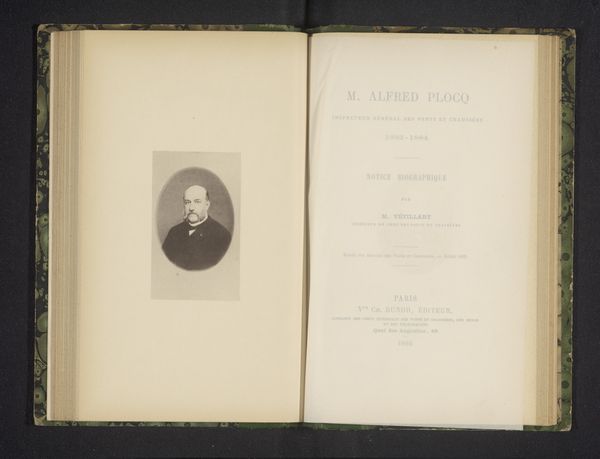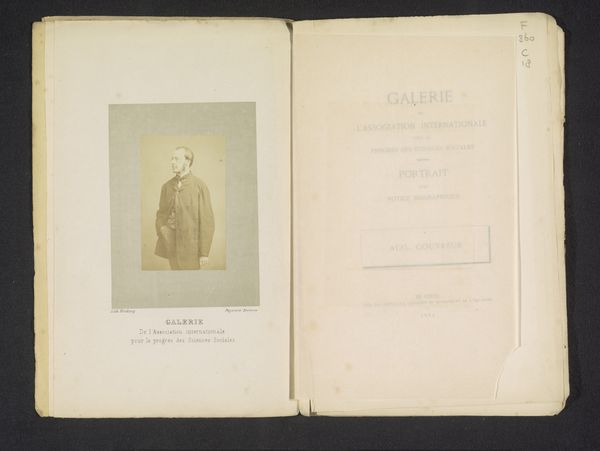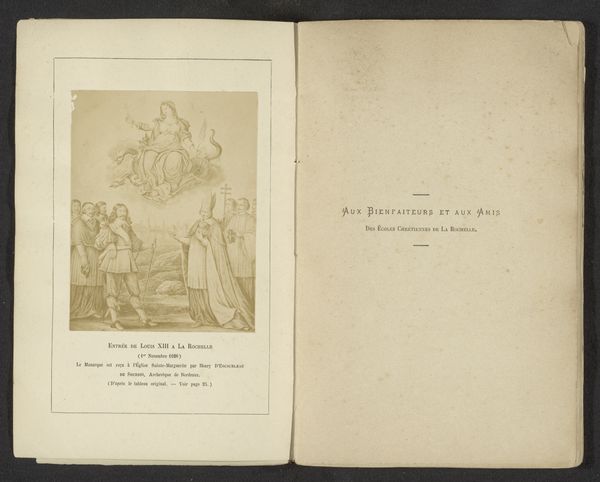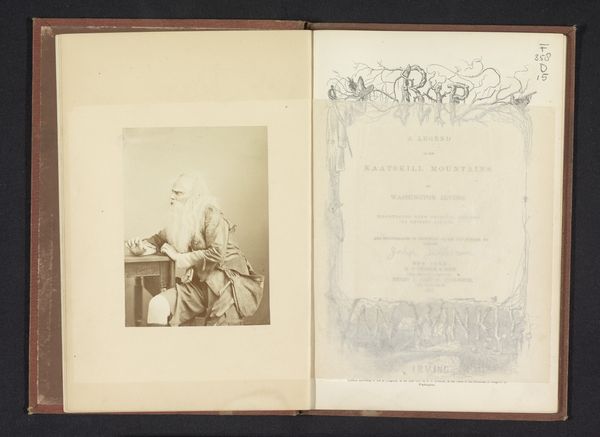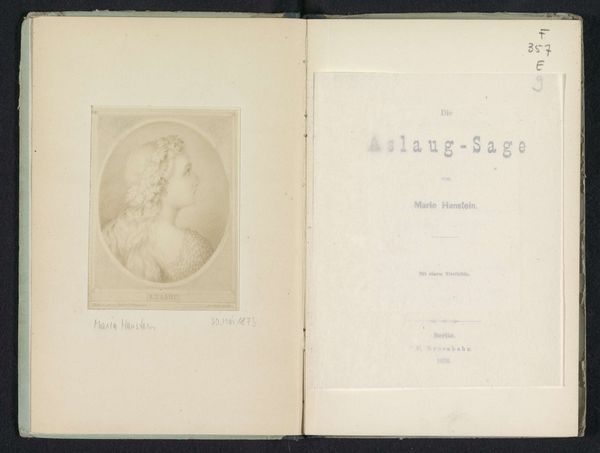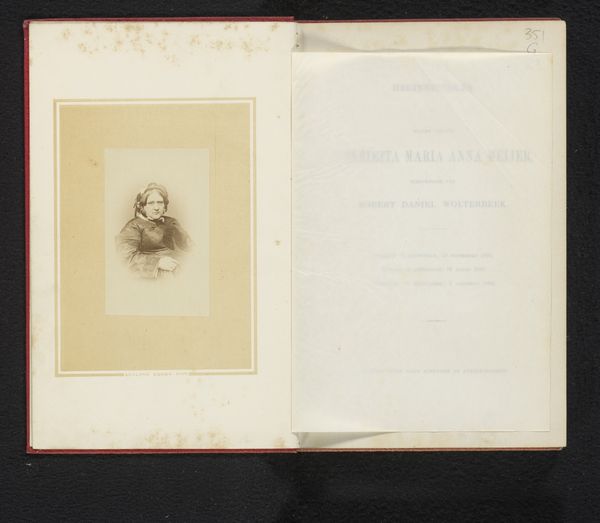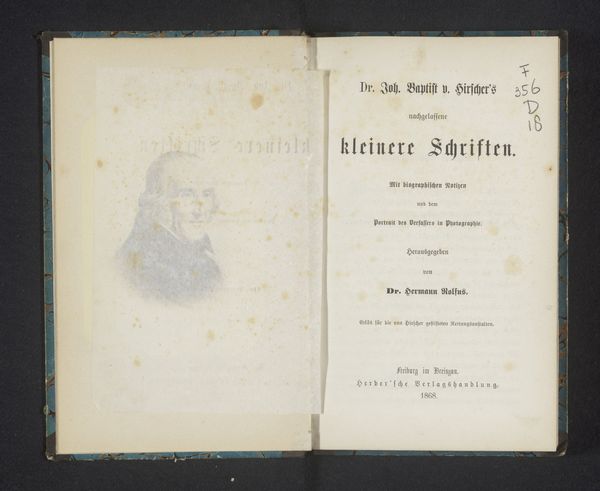
Dimensions: height 193 mm, width 109 mm
Copyright: Rijks Museum: Open Domain
Curator: This fascinating object, dating from before 1876, is a photographic reproduction of a portrait of Louise of Mecklenburg-Strelitz. It’s rendered as a gelatin-silver print, mounted on paper. Editor: There's something ghostly and tender about it. The sepia tones and soft focus give her an ethereal quality, like a fond memory surfacing. Curator: Indeed. Oval portraits were very common in romantic portraiture. Ovals soften hard edges and create an intimate view of the subject's face, suggesting vulnerability or a refined femininity. It is, literally, framing a certain way of seeing women. Editor: Absolutely. And notice the accompanying text, celebrating the hundredth anniversary of her birthday, it seems the entire layout mirrors a Victorian commemorative book – full of handwritten font, script typefaces… It’s like a precious artifact preserved within a personal sketchbook. All that loving memory made visible, like the hand is literally preserving the subject. Curator: Yes, there is a tangible effort at preservation on display here. It almost reads like a historical document, something carefully pieced together. But I find myself curious about the cultural significance Louise held to warrant such a detailed commemorative object. She looks a bit unassuming for royalty here. Editor: But her unassuming nature, that grace, perhaps that *is* what resonated. Look, the thick font and elaborate handwritten style could signify that there was widespread grief and devotion to her memory, even generations after her death. I'd venture to say there was deep longing for figures of quiet strength like Louise, and that sentiment comes through this piece. Curator: That longing makes sense when we place this work in context – the burgeoning unification of Germany, the rise of Prussia. The portrait becomes less about the individual Louise and more about what she represents – stability, tradition. I can appreciate the nostalgia. Editor: For me, the slightly aged paper also symbolizes time's effect on memory and its inherent value. Everything feels purposefully arranged to heighten that connection with the past. We’re looking at someone else's cherished past. Curator: It really makes you ponder the cyclical nature of memory and how individuals wish to make memory permanent. I can leave here today thinking of it as more than just a historical record of remembrance. Editor: Agreed. For me, it's an object lesson on how photographs are a perfect symbol of trying to preserve, like holding onto grains of sand in our hand. This portrait really touches my heart, just considering all of the cultural implications here.
Comments
No comments
Be the first to comment and join the conversation on the ultimate creative platform.
